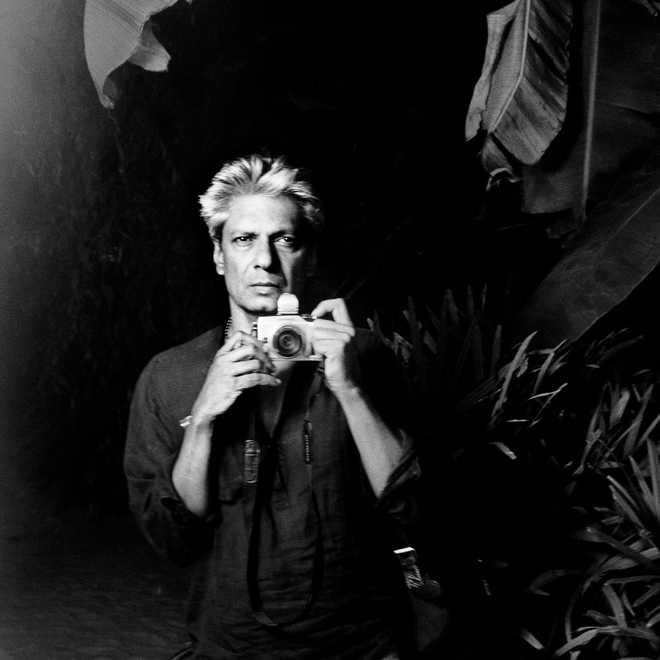
The man behind the lens Dasgupta (1956-2012) was a self-taught photographer, who straddled the worlds of artistic and fashion photography effortlessly. His fascination with black and white and his bold and individualistic style established him as one of the most notable photographers in the country.
Swati Rai
Located on the west coast of India, Goa was liberated in 1961 after 450 years of Portuguese rule. The ambivalence created by this transition of culture and political loyalty provides the backdrop for Edge of Faith, a collection of late photographer Prabuddha Dasgupta’s works. His camera sketches the gentle faces and the tranquil places as they engage in an unspoken tug-of-war between their loyalty to a history of Portuguese culture and their post-independence Indian identity.
These black and white portraitures, which paint an intimate and deeply personal picture of the Catholic community, would be displayed at the Serendipity Arts Festival, Goa, next month for the first time. Prashant Panjiar, photo journalist and co-founder Delhi Photo Festival, who has facilitated the ‘Edge of Faith’ collection, shares, “I would say that the photographs have been curated by Dasgupta himself; in the sense that he chose the subject and the theme. Considering that the photographer’s subject is Goa and this collection is being shown for the first time, I am very excited!”
These black and white photographs capture Catholic Goa in a nostalgic limbo, people and places caught in a time warp. It shows the subjects caught between the known, familiar past and the unknown future.
The photographs were published for the first time in Edge of Faith, Seagull Books 2009, authored by William Dalrymple, director Jaipur Literature Festival. Panjiar says the photographs are about the photographer’s perspective of what appealed to him. He says the subjects welcomed Dasgupta into their homes, which he has intimately captured as the subtext of the photographs. However, he insists that Dasgupta’s decision to capture the Catholic community in a limbo was a choice made as an artistic expression. Ask him what made him handpick the 35 out of the 70 pictures that Dasgupta had captured and Panjiar says, “All the pictures depict the theme. Any photograph would have represented the same.”
What then makes Goa a favourite with photographers... “Apart from the famed exotic feel of the place, there are many other things that add to the place — the Portuguese Baroque architecture, the social mores. On another level, it allows a serious exploration of the ethos of the place in a non-touristy manner. This is something that attracts artists to any place,” Panjiar says.
Talking about the relevance of photographs captured seven years ago today, Panjiar says any artistic piece is timeless. It is not an academic or research paper that limits itself to particular time zones. “People in the photograph are still alive and relevant. When we talk of India’s colonial past, Goans, who are the subjects of these photographs, are living examples of that legacy and most of them have even lived through it considering the fact that Goa gained independence just five decades ago,” he says.
Also, he says that the photographs have never been shown before in Goa, a land that it aims at chronicling. Dasgupta, who was a recipient of several awards and grants, including the Yves Saint-Laurent grant for photography, and whose work forms a part of the collections of many individuals and institutions like Galleria Carla Sozzani, Milan, had shot these pictures digitally. “I think he was a great believer in democratisation of art and as photography is changing so dynamically, I am not sure where it would stand in future,” Panjiar sums up. Dasgupta was in the process of publishing his last work titled Longing, when he unexpectedly passed away on August 12, 2012.
Meanwhile, the photographer’s portrayal of Goa caught in a time warp — between comforting nostalgia and a doubt-ridden and insecure future — make these photographs worth a revisit.
The man behind the lens
Dasgupta (1956-2012) was a self-taught photographer, who straddled the worlds of artistic and fashion photography effortlessly. His fascination with black and white and his bold and individualistic style established him as one of the most notable photographers in the country.



























